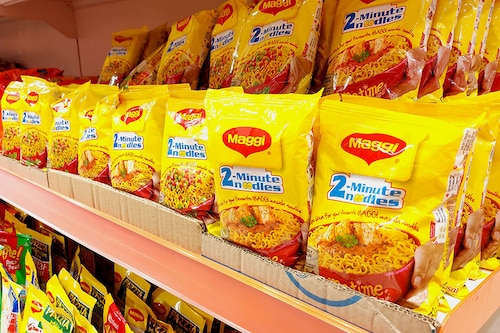Maggi's two-minute strategy and how convenience and comfort combined
Nestle-owned Maggi Noodles' success in capturing the Indian imagination and taste has taken years


Visualise bright yellow packaging and the words “2 minute" printed on it. Most people will say it is a Maggi instant noodle pack. Be it a local chai wala or a food stall vendor, at street corners or on highways, Maggi is often listed as a hot food they can serve.
Even on hikes and adventure camps, the pack of Maggi Noodles is a trusted companion for travellers. It has become a familiar taste and a recognizable aroma that is adored by Indians. Eaten anytime, anywhere, it requires very little to cook a hot, quick and tasty snack. But Maggi Noodles’ success in capturing the Indian imagination, and indeed the taste has taken years.
Maggi Noodles was launched in India in 1982. Indians were familiar with noodles as part of a Chinese restaurant menu, but the Maggi style of “instant" noodles was new. The product was positioned as a convenient option for lunch and dinner. However, it was proving difficult to change the traditional behaviour of Indians regarding these meals. The Nestle team had to make Maggi Noodles appealing to the Indian audience.
Sangeeta Talwar led the Nestle team and started work on identifying occasions where eating habits could be easier to change or were weak. They realized that evening snacks were an area that was open to change since available options had problems.
Readymade options like biscuits and chips did exist but were not filling or healthy. Home-made fresh hot snacks were time-consuming. Fresh snacks from outside were again expensive and could be unhealthy. This was an area where Maggi could be placed as an alternative evening snack which was tasty, easy to make, filling and hot.
The category of kids was of special interest because they would come home from school or play and would be hungry. Homemakers (mostly mothers) would have to cook something fast. Children’s habits were also easier to change compared to adults. The decision was made.
The focus of Maggi Noodles was to be on the mother-child relationship and indulgence at snack time.
The TV commercial focused on the mother-child relationship. It showed children running up to the mother and saying, as they do in real life, that they were hungry, “Mummy, bhook lagi hai". To which the mother smiled and said, “do minute" (just two minutes). Her demeanour was relaxed as she prepared hot Maggi Noodles, while the children eagerly awaited the snack. Slurping down the “two-minute" noodles, the kids were shown enjoying their snack. The TV commercial had a clear simple message mothers and children both prefer Maggi Noodles, for its convenience and taste. The advertisement emphasized the brand promise “Fast to cook! Good to Eat!" at the end.
The catchy tune, the happy playful children and the warmth of a fast, home-cooked snack caught the attention of the audience.
Maggi Noodles used the same concept of mother and child over the years to cement the idea of Maggi as the preferred hot and easy-to-make snack. Later ads included the whole family, where grandparents too, enjoyed this treat. In India, many other companies started making instant noodles, but Maggi kept growing.
In 1997, then Nestle global chief executive officer Peter Brabeck committed the company to a nutrition, health and wellness (NHW) strategy. Maggi"s product portfolio reflected this. The product line has grown to include "Nutri-licious" atta and oats instant noodles. The messaging too reflected this transition “Taste bhi, health bhi".
In 2015, a controversy broke out about the possible presence of monosodium glutamate (MSG) in Maggi and a ban that lasted for a few months. The brand was reintroduced and has managed to bounce back from a crisis that threatened its existence.
Today, Maggi is a snack, a quick meal, or even a nostalgic comfort food. Maggi’s continued growth was helped by Nestle suggesting new use occasions. Maggi Noodles are also used in recipes to create unique dishes like chicken biryani noodles and cumin dal shorba. Maggi Masala Noodles which introduced the nation to quick, tasty, convenient food still rule the heart of Indians, giving its delighted customers “Your Favourite Masala Taste".
Subodh Tagare is an Associate Professor at IMT Nagpur, where he teaches courses on marketing. Prior to IMT, Subodh was the marketing director at American Power Conversion/ Schneider Electric for South Asia.
S Vejay Anand consults with organizations on business strategy and marketing. He has also been an entrepreneur in the food and pet care spaces. Earlier he was President at Coffee Day and COO at USPL.
First Published: Feb 13, 2023, 16:42
Subscribe Now